|
This morning my father looked out the window and saw a bald eagle soar over the field. I ran out with the camera, but the eagle was gone. He was quite surprised when I came back with these pictures instead! :D
4 Comments
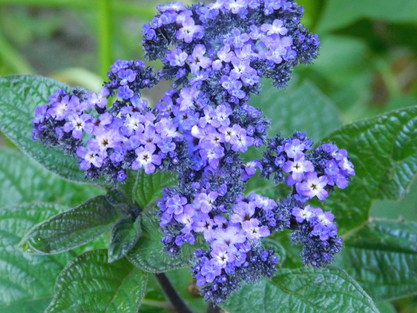 Heliotrope is another much loved flower in my garden (it seems that I love them all and would be hard-pressed to choose a single favorite!). It is called Heliotrope because it follows the course of the sun. Mrs. Grieve says that "after opening it gradually turns from east to west and during the night turns again to the east to meet the rising sun". I confess I didn't observe it closely enough last summer to notice this characteristic, but I intend to watch it it much more diligently in the summer to come! This sweet flower was discovered in the Peruvian Andes by the French botanist Joseph de Juissieu. The story of its discovery and introduction to Europe is told by G. Francis in The Favorites of the Flower Garden (published in 1844): "While botanizing one day in the Cordilleras he [Juissieu] suddenly found himself overpowered by an intoxicating perfume; he looked around, expecting to see some gaudy flower or other from which it proceeded, but could percieve nothing but some handsome bushes of a light green, the extremities of whose sprays were tipped with flowers of a faint blue color. He went up to these bushes, which were about 6 feet high, and saw that the flowers which they bore were all turned towards the sun. Struck with this peculiarity the learned botanist gave to the plant the name of Heliotrope, and collecting some of the seeds he sent them to the Royal Garden at Paris, where the Heliotrope was first cultivated in 1740. It has since spread to all the countries of Europe". Other sources give the year of its introduction to Europe as 1751 or 1757, but the date of its introduction to the US seems to be a mystery. Interestingly, in Thomas Jefferson's Garden Book there is a list of seeds and plants sent by Jefferson to Francis Eppes from Paris about 1786, while he was serving as Minister to France. On this list is "Heliotrope. to be sowed in the spring. a delicious flower, but I suspect it must be planted in boxes & kept in the house in the winter. the smell rewards the care". I certainly am no authority on the matter, but I wonder if perhaps Jefferson should receive the credit for its introduction to this country? Heliotrope was very popular in the Victorian era and was taken to represent devotion. It was one of Emily Dickenson's favorite flowers, and two heliotropes were put in her hands after her death "to take to Judge Lord".
It is also much beloved in its native land where, according to G. Francis, it "takes the place of the rose among us, as the emblem of all that is sweet and beautiful". And yet, he tells us, even the best of us have our enemies, and "the little Heliotrope, although accepted as a darling by the fair sex throughout the world (and who so well able as they to judge of beauty and merit) has met with its maligner, and been accounted with all its sweetness as but an emblem of self-interest, There is a flower whose modest eye, Is turned with looks of light and love, Who breathes her softest, sweetest sigh, When ere the sun is bright above. Let clouds obscure, or darkness veil, Her fond idolatry is fled! Her sighs no more their sweets exhale, The loving eye is cold and dead! Canst thou not trace a moral here, False flatterer of the prosperous hour, Let but an adverse cloud appear, And thou art faithless as the flower!" Personally, I do not feel that the poor Heliotrope deserves this disparaging poem. The weather in my garden is far from being ideal for a native of Peru, and yet it grows and blooms the best it can, although it only manages to attain a height of 10 inches or so. Heliotrope is another member of the Borage family (Boraginaceae). It is also called by the common names Turnsole (which has the same meaning as Heliotrope) and Cherry Pie Plant, because some think that the flowers smell exactly like cherries baked in a pie. Others describe its fragrance as vanilla or almond. Sadly, the scent is almost lost in many modern cultivars. Those with white flowers are often the most fragrant, but I haven't been able to find any seed, so I grow the dark purple Ognodowy, which has a pleasant fragrance, but only if you get close enough! Historically, the whole plant was used in a tincture for clergyman's sore throat, but it is now considered to be poisonous. Also, the scent was once believed to help fight fatigue, and surely there is no harm in trying that! Truly, the Heliotrope is another treasure and deserves to find a place in every garden! On Tuesday, we got another 8 inches of snow, followed by at least a quarter inch of ice, and then about 4 inches of snow on top of that! Needless to say, it was a mess! Yesterday was windy so there was quite a bit of drifting, too. But we have finally dug ourselves out again, and this morning was so beautiful I decided to go for a walk (on snowshoes, of course!). The temperature was about 0F, and the ice on the trees made everything look magical! This is a potato field behind our property...I often find moose and deer tracks out here, but not today! All that's left of a 5 ft. fence... I got a little carried away taking pictures of the trees with the sun shining on their icy branches! Japanese Knotweed...it's invasive, but pretty, too. It looks very tropical in the summer. There have been moments this winter when I felt like this goldenrod! Some frozen mountain ash berries... And as I get closer to home, there's my greenhouse...looks kinda like it's sitting in a styrofoam cooler! Honeysuckle bush...this thing gets crushed almost every winter but it always bounces right back! And there's my beloved flower garden slumbering under a thick blanket of snow! I hope you enjoyed my morning ramble! :)
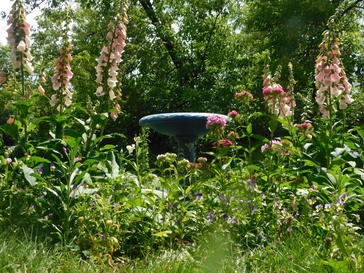 Recently, a friend asked me if I have any plans for a 16th or 17th century herb garden. Of course, that got me thinking; and the more I think about it the more excited I become! Actually, I have been puzzling all winter over where to grow all the herbs I want to have this year. This circular garden with the birdbath is my herb garden now, but it is much too small. Many herbs look lovely in the flower garden, but I'd also like to give them a garden of their own. If you've seen my rather messy flower gardens, you'll probably be shocked when I say that I am very much attracted to formal herbs gardens! But apparently I am not alone...I was just reading the chapter on herb gardens in Louise Beebe Wilder's book, "My Garden" where she writes that "however wild, or natural, or irregular we may care to be in our flower gardens, in the herb garden we have no precedent for being aught but prim and tidy and geometrical". But alas, I have very little room left for my ever-expanding gardens! Perhaps the birdbath garden will have to do for the majority of the herbs right now. I think there is some room left to enlarge it yet. 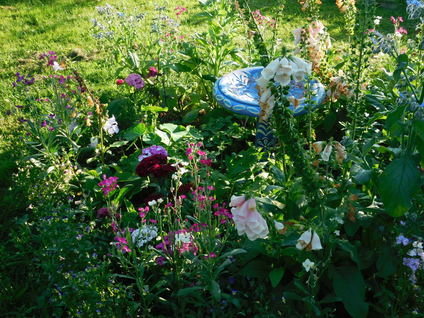 I couldn't resist planting several Foxgloves, Sweet Williams, Stocks, Mignonettes and Heartsease among the herbs last year and although it was lovely, I sometimes felt that I had spoiled it as a true herb garden. Well, it is truly amazing how many plants that we often think of only as flowers could have a proper place in the herb garden also! Looking through Mrs. Grieve's "A Modern Herbal", I was surprised and delighted to come across so many favorites, such as the Forget-me-not, Love-lies-bleeding, Foxglove, Heartsease, Heliotrope, Muscari, Narcissus, Snapdragon, Peony, and so many, many others! Nearly every plant in my garden has been used for something and I am getting thrills as I write just thinking about all the history growing there! Hilda Leyel sums up my feelings exactly when she says, "Surely it makes a garden more romantic and wonderful to know that Wallflowers, Irises, Lupins, Delphiniums, Columbines, Dahlias and Chysanthemums, every flower in the garden from the first Snowdrop to the Christmas Rose, are not only there for man's pleasure but have their compassionate use in his pain". So, if I can't have the grand formal herb garden just yet, maybe it is time to see my whole garden as an herb garden and a living history! What do you think? "Hope's gentle gem, the sweet Forget-me-not"  I just love this little flower, so fragile in appearance, and yet so hardy! In fact, one of its many species, M. alpestris, is the state flower of Alaska! As Henry David Thoreau wrote, "It is the more beautiful for being small and unpretending; even flowers must be modest". Its botanical name, Myosotis, is Greek for mouse's ears. I'm a little bit confused about whether this refers to the small wooly leaves, or the tiny petals. Either way, I think it is a charming and fitting name! There are over 70 species in this genus, and they are found in Europe, Asia, North America and New Zealand. Myosotis is a member of the Boraginaceae family, and is related to borage, heliotrope, and comfrey. This flower seems to have been especially beloved in Germany, where it was called Vergissmeinnicht. I suppose almost everyone has heard some version of the German legend, which tells of a knight and his lady walking along the shore of the Danube River. She admires the tiny blue flowers growing at the water's edge. But when he goes to pick them for her, he is caught in the current and swept away. He tosses the flowers to her, calling out, "Vergiss mein nicht!". Actually, there are many different legends about this flower and how it got its name. In another German legend, when God had given each plant and animal a name, He heard a small voice at His feet saying "what about me?". He bent down and picked up the little plant He had forgotten, and said “Because I forgot once, I shall never forget you again, and that shall be your name.” Yet another is that when the Creator thought he had given every flower its color, He heard this one whisper, "Forget-me-not". There was only a tiny bit of blue left, but the humble Forget-me-not was delighted to wear it. Both of these legends bring to mind a lovely poem I read a couple years ago, and which I always think of when I see this flower... 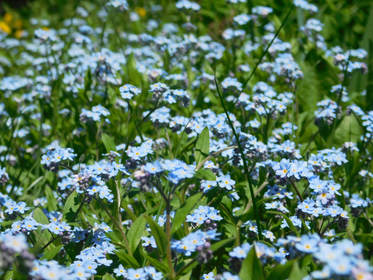 When to the flowers so beautiful, The Father gave a name, Back came a little blue-eyed one, (All timidly it came); And standing at its Father's feet, And gazing in His face, It said in low and trembling tones, "Dear God, the name Thou gavest me, Alas! I have forgot." Then kindly looked the Father down, And said, "Forget Me Not". There is also a rather amusing theory that the leaves taste so bad, once you try them you will never forget! Anyway, it seems to be anybody's guess how it really got its name. It is certainly rich in history, and much loved since at least Medieval times. Henry of Lancaster (later Henry IV) took it as his personal emblem while in exile. The forget-me-not is a biennial, but it self-sows so prolifically, you will never need to plant it again! It is one of the easiest flowers to grow. After just 2 years in my garden, it is already trying to take over the entire area! Not that I mind at all in the spring, but I am going to have to be careful how many I allow to go to seed next summer! The seeds can be scattered where they are to grow anytime during the summer. In his book, The Cottage Garden and the Old-Fashioned Flowers, Roy Genders writes that "In England, it was found only in the cottage garden, hiding its beauty beneath other plants and where it enjoyed the moist, cool soil. It was not used as a late spring bedding plant to accompany the tulips until towards the end of the nineteenth century". In my opinion, its simple charm is at its best in the cottage garden. 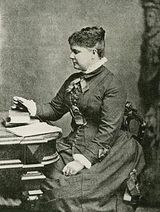 Celia Thaxter Celia Thaxter It is so beautiful when seen from a distance in full bloom, and looks like a cool mist over the garden. But have you ever looked at them really closely? In An Island Garden, Celia Thaxter writes, "If one gaze closely into a tiny flower of the pale blue Forget-me-not, what a chapter of loveliness is there! One sees at a glance the sweet color of the starry, compact cluster, and perhaps will notice that the delicate buds in their cherishing calyx are several shades of rose and lilac before the unclose, but unless one studies it closely, how shall one know that in most cases the himmel-blau petals are distinctly heart-shaped, that round its golden centre it wears a neck-lace of pearls...." Anyway, I hope you enjoyed this little history ramble! I am having so much fun learning more about the history and stories nehind the flowers that grow in my garden!
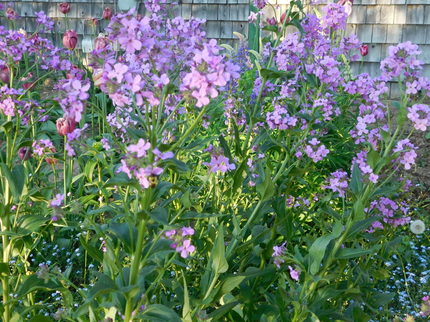 Hesperis Matronalis is known by many charming common names, including Sweet Rocket, Evening Dame's Rocket, Night-scented Gilliflower, Dame's Gilliflower, Queen's Gilliflower, Rogues' Gilliflower, Damask Violet, Mother-of-the-evening, Vesper-flower, and Summer Lilac. The famous English herbalist, Nicholas Culpeper (1616-1654), calls it Scentless Eveweed, but writes that "the gardeners, not very nice or careful about names, call it Striped or Double Rocket". 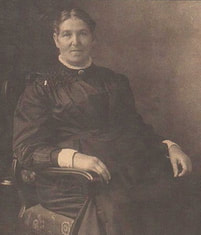 Mrs. Maud Grieve (1858-1929) Mrs. Maud Grieve (1858-1929) Hesperis is a Greek word, meaning Evening, and Matronalis is Latin and means "of the mother, or "of the married woman". In "A Modern Herbal", Maud Grieve (1858-1929) says that "In the language of flowers, the Rocket has been taken to represent deceit, since it gives out a lovely perfume in the evening, but in the daytime has none. Hence its name Hesperis, or Vesper-Flower, given it by the Ancients". Its association with deceit is likely also why it was called Eveweed. Louise Beebe Wilder gives a beautiful description of this flower in her book, "My Garden" (published in 1916): "Hesperis Matronalis has starlike flowers, white, or in shades of pale purple and violet, and gives forth to the night a most delicious fragrance which it quite withholds from the day." 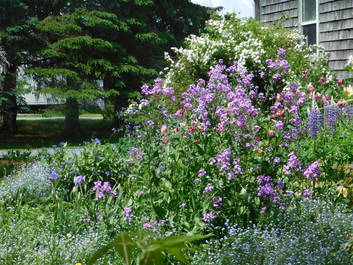 According to Mrs. Grieve, it is a "native of Italy, but found throughout most of Central and Mediterranean Europe, and in Britain and Russian Asia as escapes from gardens". It arrived in North America in the 17th century, and has naturalized from Newfoundland to Georgia. In some states, it is even considered invasive. It does self-sow prolifically. There is a beautiful garden a few miles from us that is full of Sweet Rocket every May and June, and it also blooms in an old field across the road from that garden. It is such a pretty flower, though, I can't see why anyone would mind! Louise Beebe Wilder writes that "perhaps it is a bit too free a seeder to be admitted to very choice gardens, but treated as bienniels, the old plants, which grow lax and straggling, pulled out and thrown away and only a few of the many seedlings retained, it may be enjoyed with safety". 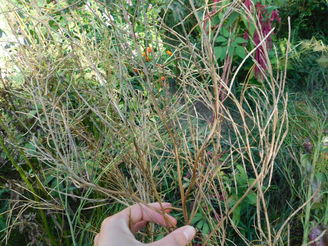 The seed pods look similar to those of broccoli and radishes The seed pods look similar to those of broccoli and radishes Hesperis Matronalis is a member of the Brassicaceae family, which makes it a relative of cabbage, broccoli, mustard, cauliflower, kale, radishes, turnips, etc. I found this interesting, because I noticed last year how much the flowers and seedpods resemble those of broccoli and radishes! The leaves are rich in Vitamin C and have been used to prevent scurvy. However, Mrs. Grieve warns that "a strong dose will cause vomiting". Nicholas Culpeper says that "it is accounted a good wound-herb", and also mentions that "some eat it with bread and butter on account of its taste, which resembles garlick". The seeds have also been mixed with vinegar and uses as a cure for freckles! I am looking forward to seeing this lovely flower in my garden again next spring. Now I am wondering which of its pretty names to call it by! Which is your favorite?
|
AuthorI am a passionate gardener and seed-saver, who also enjoys playing the violin and accordion, running, spending time with my 4 golden retrievers, keeping chickens, photography, and reading. Archives
March 2019
|
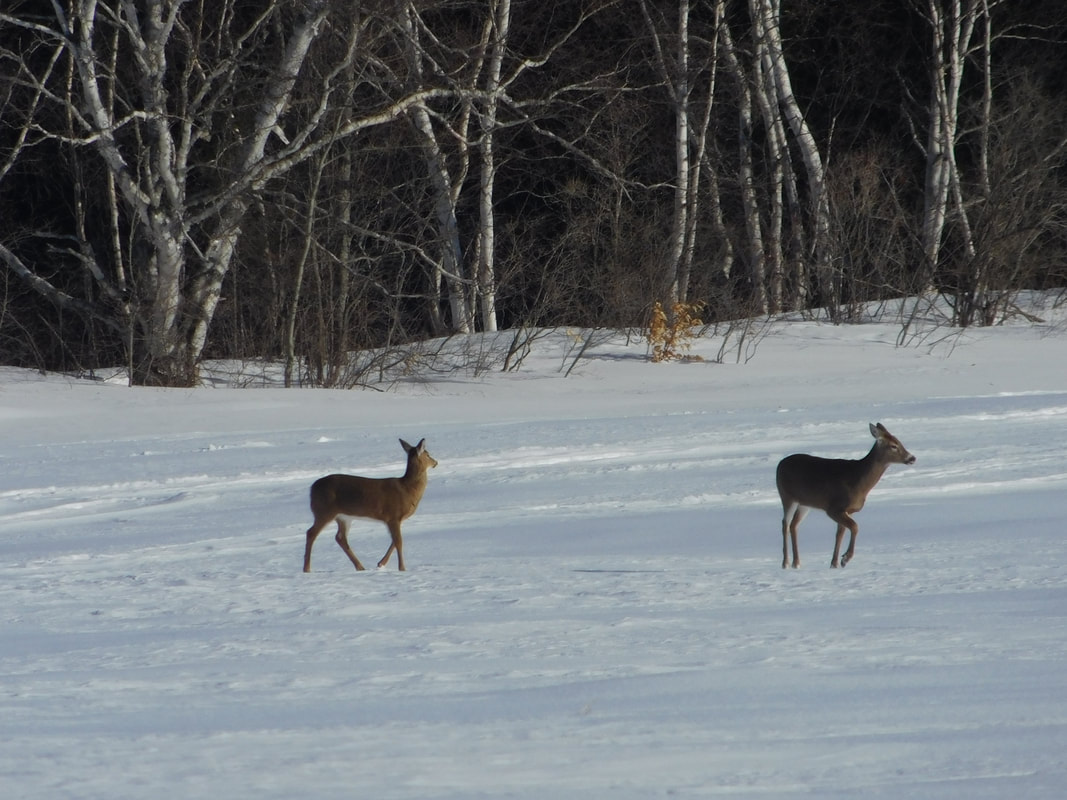

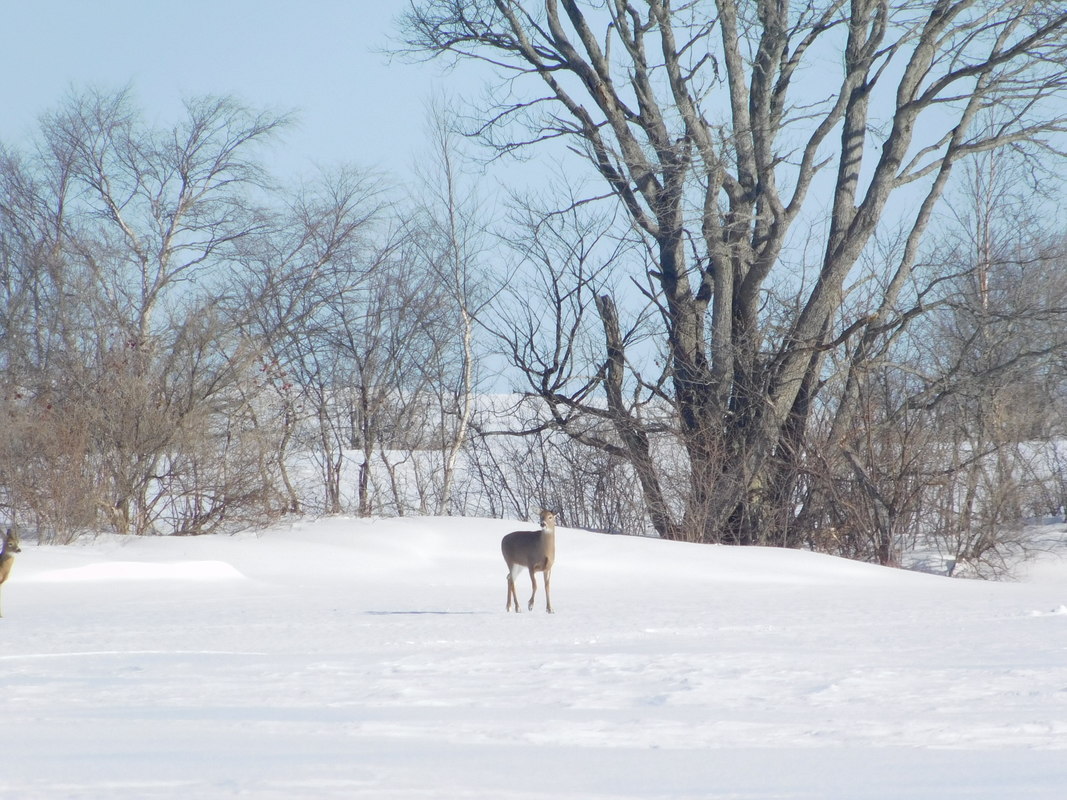


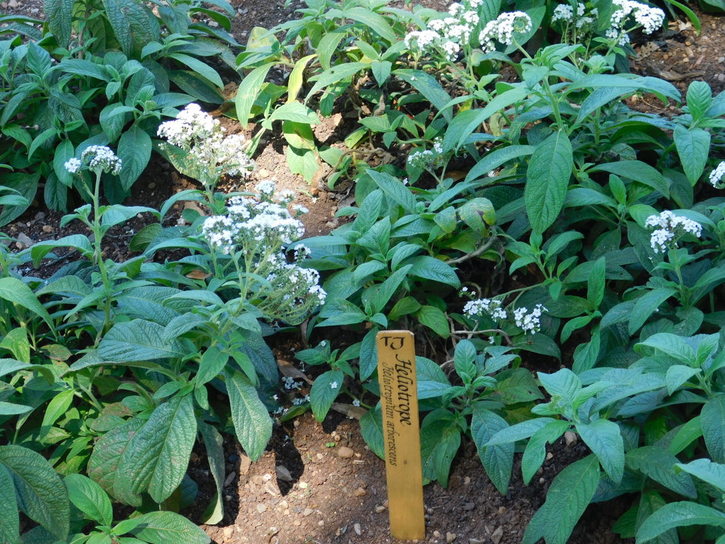


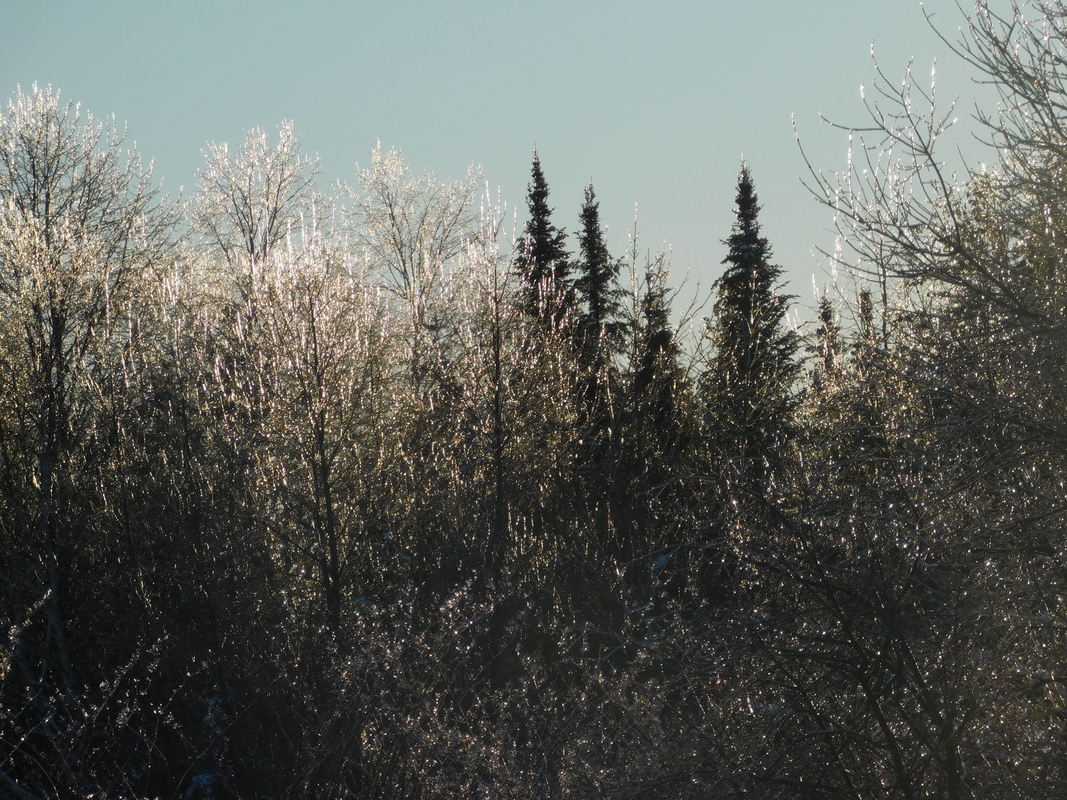
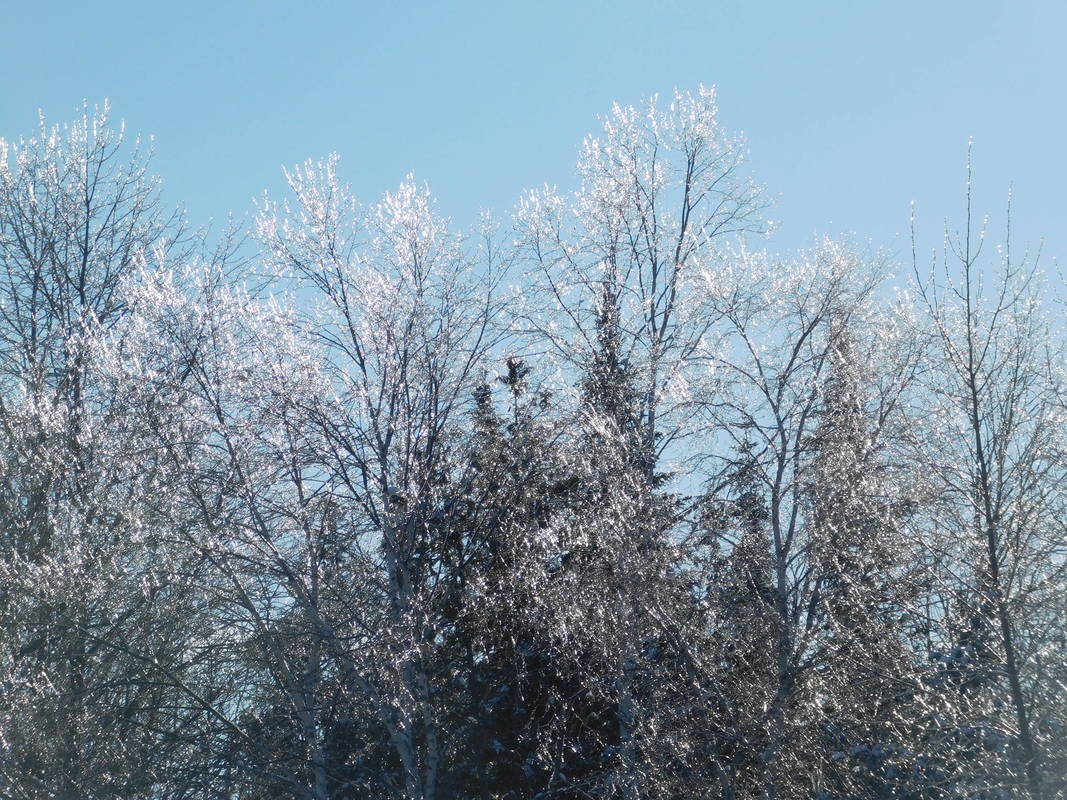
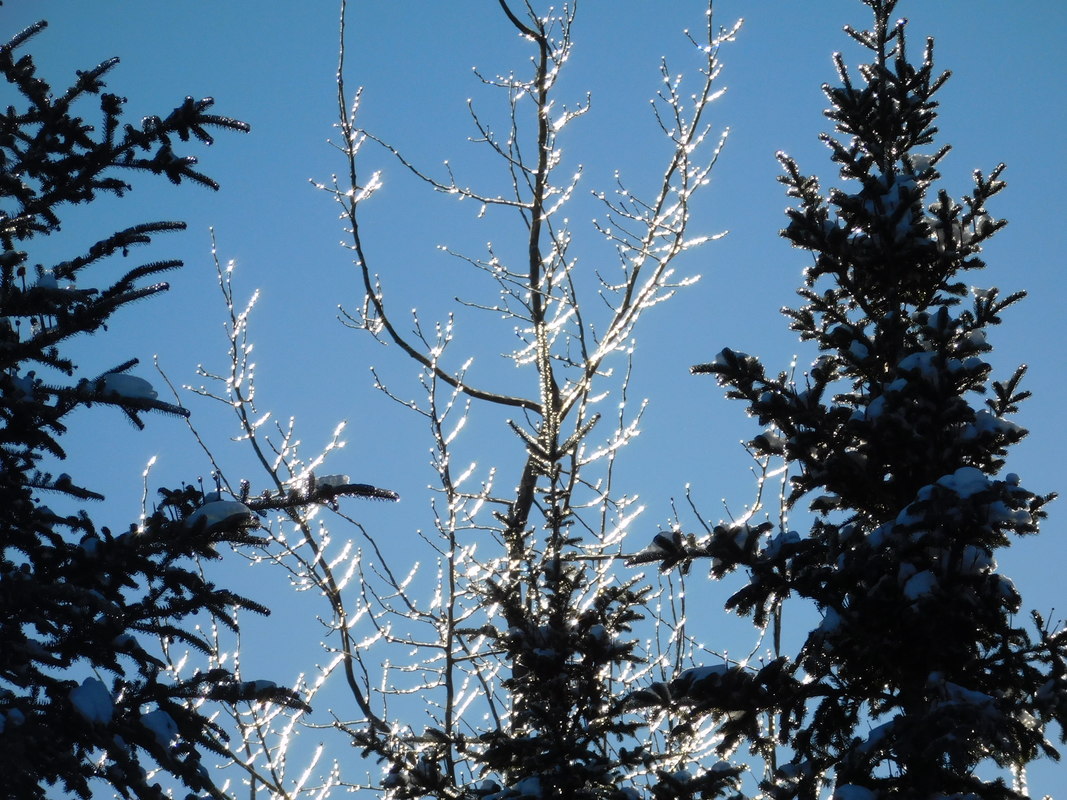
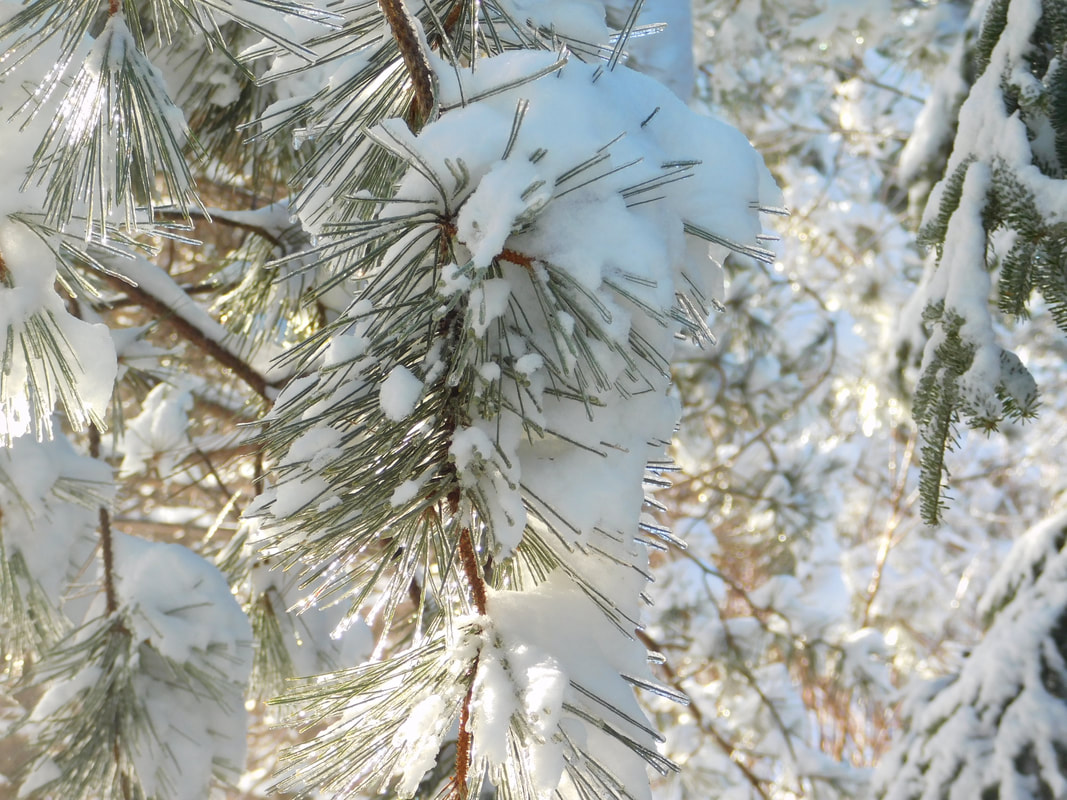

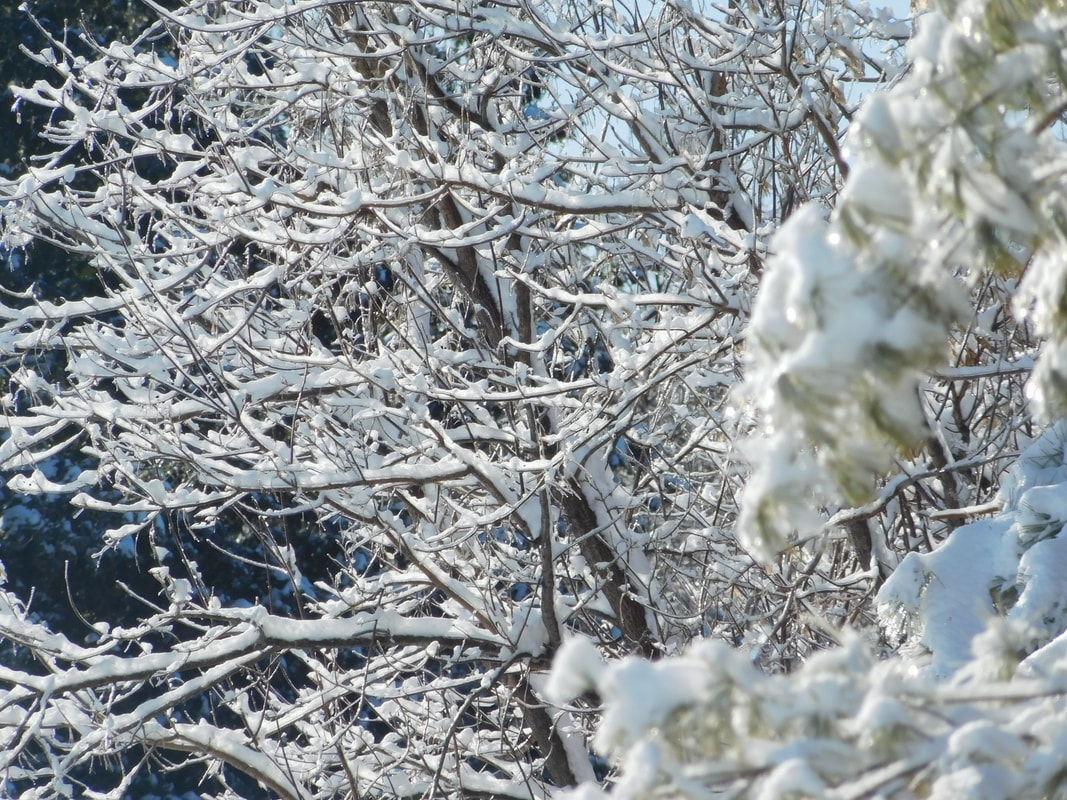

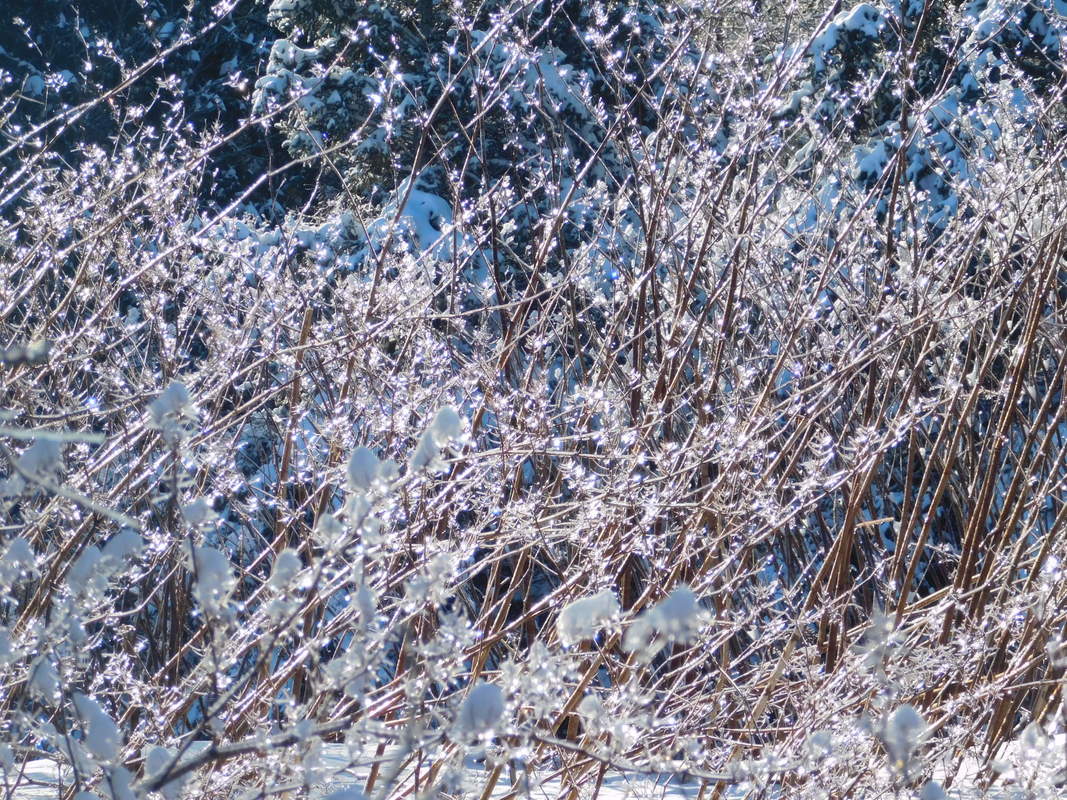
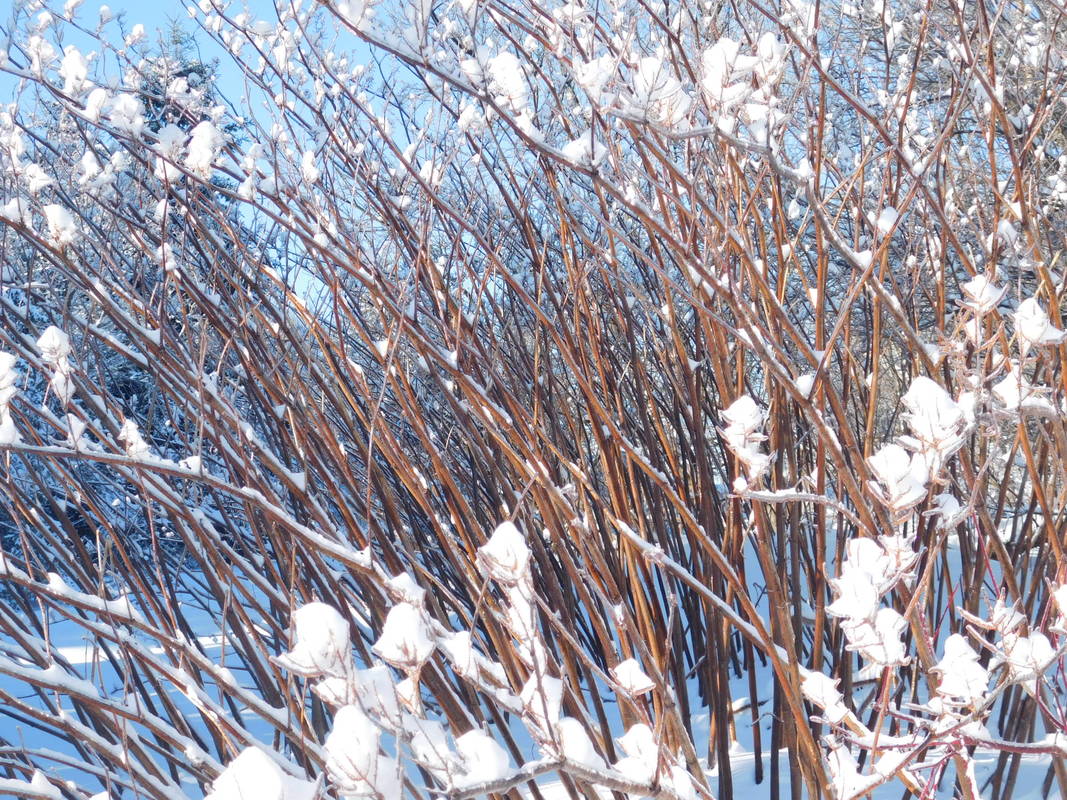
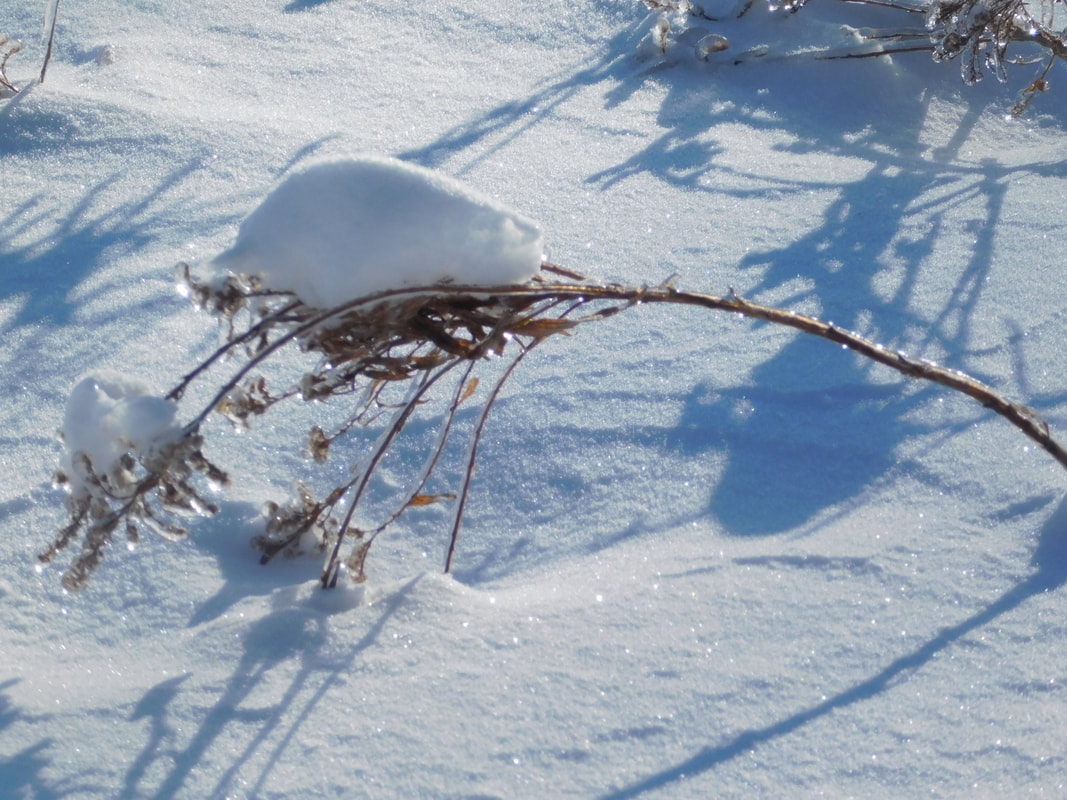
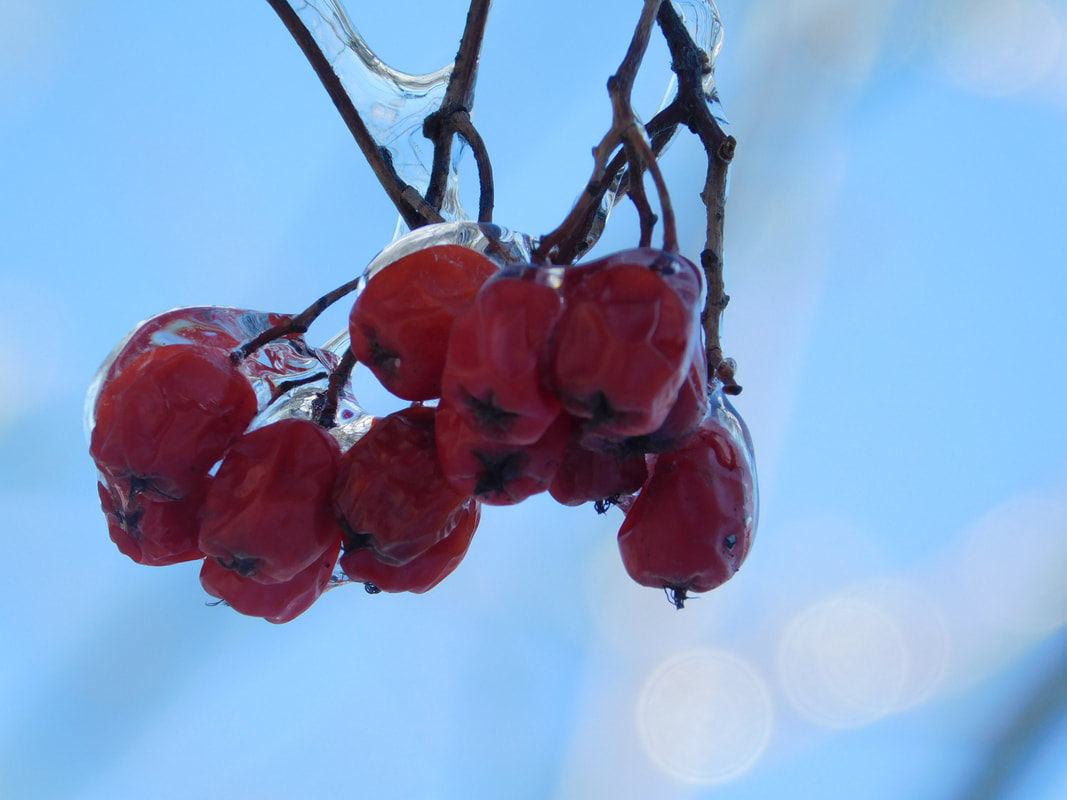

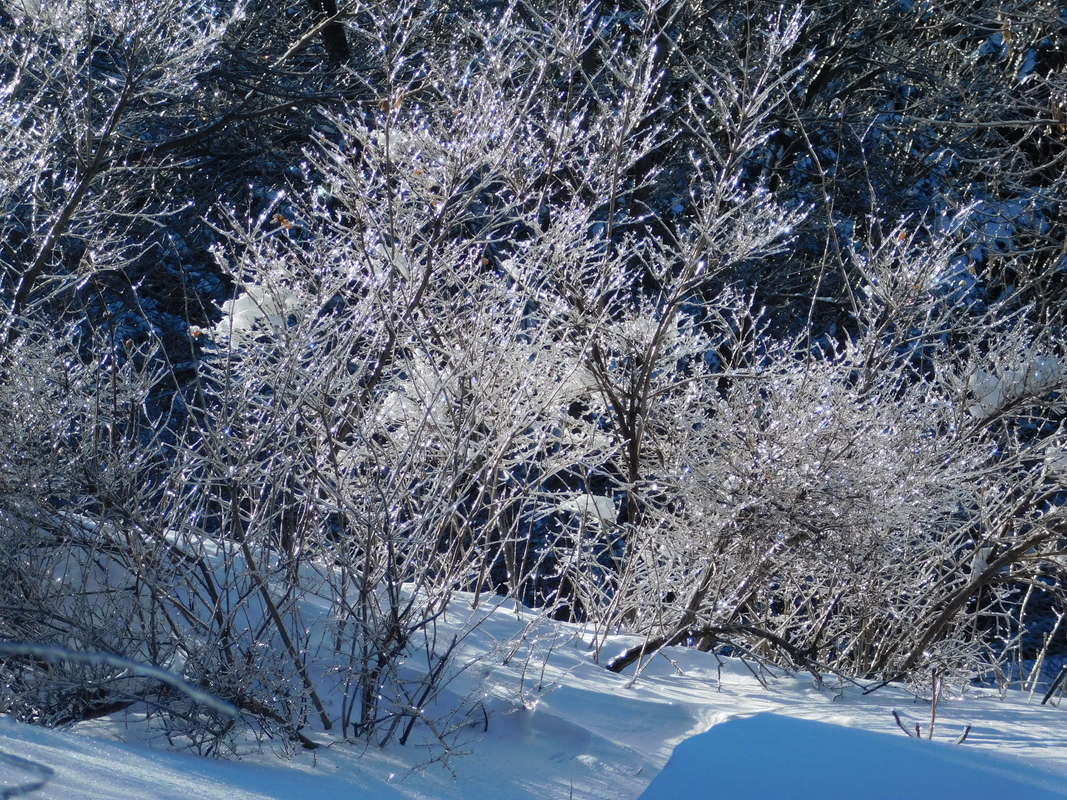

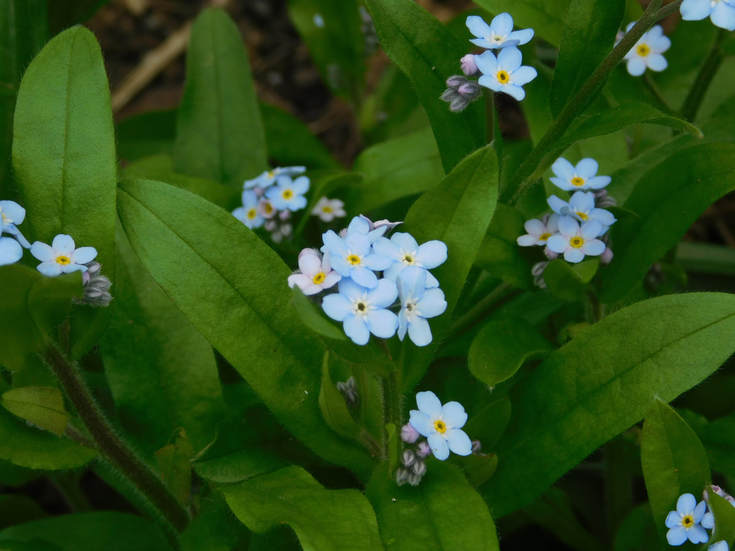



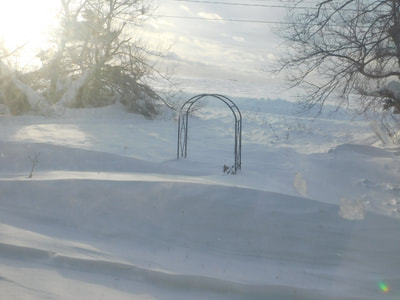













 RSS Feed
RSS Feed
